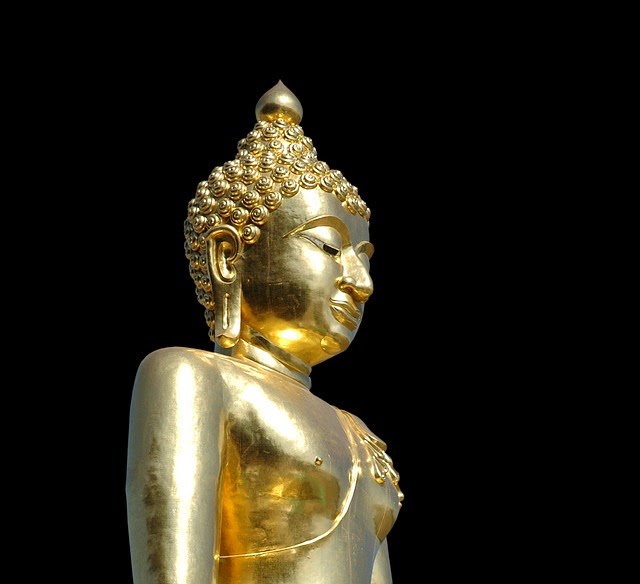POSTSCRIPT.
To Find More Interesting Resources Click below :
|
Almost every European writer on Buddhism, of late years, has assisted in giving currency to this utterly erroneous calculation, and it is high time that an attempt should be made to dissipate a serious misconception.
It is forgotten that mere sympathizers with Buddhism, who occasionally conform to Buddhistic practices, are not true Buddhists. In China the great majority are first of all Confucianists and then either Tāoists or Buddhists or both. In Japan Confucianism and Shintoism co-exist with Buddhism. In some other Buddhist countries a kind of Shamanism is practically dominant. The best authorities (including the Oxford Professor of Chinese, as stated in the Introduction to his excellent work ‘The Travels of Fā-hien’) are of opinion that there are not more than 100 millions of real Buddhists in the world, and that Christianity with its 430 to 450 millions of adherents has now the numerical preponderance over all other religions. I am entirely of the same opinion. I hold that the Buddhism, described in the following pages, contained within itself, from the earliest times, the germs of disease, decay, and death (see p. 557), and that its present condition is one of rapidly increasing disintegration and decline.
To Find More Interesting Resources Click below :
|
We must not forget that Buddhism has disappeared from India proper, although it dominates in Ceylon and Burma, and although a few Buddhist travellers find their way back to the land of its origin and sojourn there.
Indeed, if I were called upon to give a rough comparative numerical estimate of the six chief religious systems of the world, I should be inclined, on the whole, to regard Confucianism as constituting, next to Christianity, the most numerically prevalent creed. We have to bear in mind the immense populations, both in China and Japan, whose chief creed is Confucianism.
Professor Legge informs me that Dr. Happer—an American Presbyterian Missionary of about 45 years standing, who has gone carefully into the statistics of Buddhism—reckons only 20 millions of Buddhists in China, and not more than 72½ millions in the whole of Asia. Dr. Happer states that, if the Chinese were required to class themselves as Confucianists or Buddhists or Tāoists, 19/20ths, if not 99/100ths, of them would, in his opinion, claim to be designated as Confucianists.
In all probability his estimate of the number of Buddhists in China is too low, but the Chinese ambassador Liū, with whom Professor Legge once had a conversation on this subject, ridiculed the view that they were as numerous as the Confucianists.
Undeniably, as it seems to me, the next place after Christianity and Confucianism should be given to Brāhmanism and Hindūism, which are not really two systems but practically one; the latter being merely xvii an expansion of the former, modified by contact with Buddhism.
Brāhmanism, as I have elsewhere shown, is nothing but spiritual Pantheism; that is, a belief in the universal diffusion of an impersonal Spirit (called Brăhmăn or Brăhmă)—as the only really existing Essence—and in its manifesting itself in Mind and in countless material forces and forms, including gods, demons, men, and animals, which, after fulfilling their course, must ultimately be re-absorbed into the one impersonal Essence and be again evolved in endless evolution and dissolution.
Hindūism, with its worship of Vishṇu and Ṡiva, is based on this pantheistic doctrine, but the majority of the Hindūs are merely observers of Brāhmanical institutions with their accompanying Hindū caste usages. If, however, we employ the term Hindū in its widest acceptation (omitting only all Islāmized Hindūs) we may safely affirm that the adherents of Hindūism have reached an aggregate of nearly 200 millions. In the opinion of Sir William Wilson Hunter, they are still rapidly increasing, both by excess of births over deaths and by accretions from more backward systems of belief.
Probably Buddhism has a right to the fourth place in the scale of numerical comparison. At any rate the number of Buddhists can scarcely be calculated at less than 100 millions.
In regard to Muhammadanism, this creed should not, I think, be placed higher than fifth in the enumeration. In its purest form it ought to be called xviii Islām, and in that form it is a mere distorted copy of Judaism.
The Empress of India, as is well known, rules over more Muhammadans than any other potentate in the world. Probably the Musalmān population of the whole of India now numbers 55 millions.
As to the number of Muhammadans in the Turkish empire, there are no very trustworthy data to guide us, but the aggregate is believed to be about 14 millions; while Africa can scarcely reckon more than that number, even if Egypt be included.
The sixth system, Tāoism (the system of Lāo-tsze), according to Professor Legge, should rank numerically after both Muhammadanism and Buddhism.
Of course Jainism (p. 529) and Zoroastrianism (the religion of the Pārsīs) are too numerically insignificant to occupy places in the above comparison.
It is possible that a careful census might result in a more favourable estimate of the number of Buddhists in the world, than I have here submitted; but at all events it may safely be alleged that, even as a form of popular religion, Buddhism is gradually losing its vitality—gradually loosening its hold on the vast populations once loyal to its rule; nay, that the time is rapidly approaching when its capacity for resistance must give way before the mighty forces which are destined in the end to sweep it from the earth.
M. M.-W.
88 Onslow Gardens, London.
January 15, 1889.








No comments:
Post a Comment